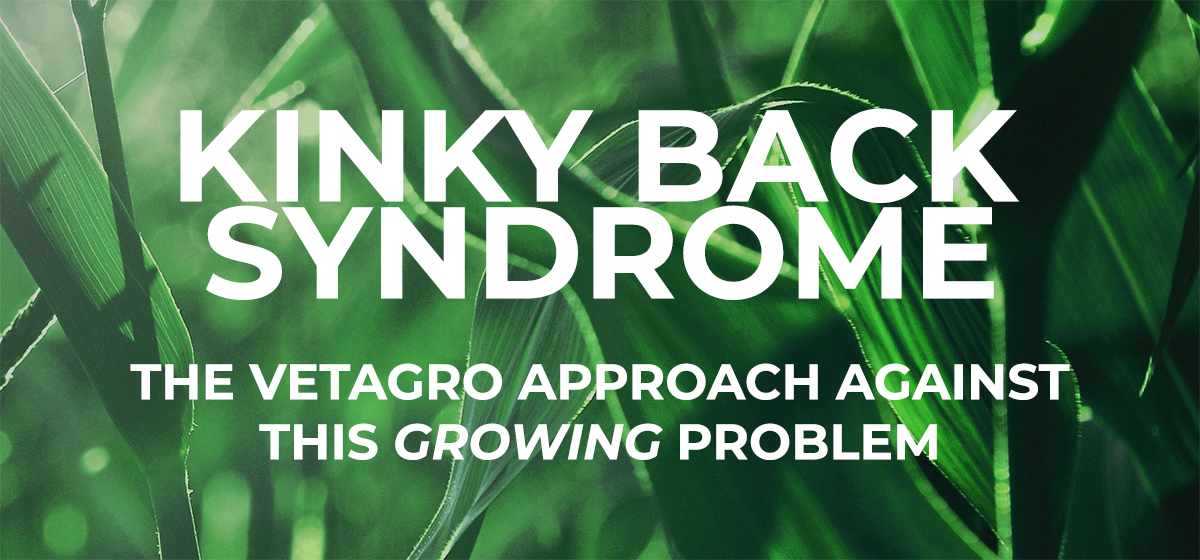What is “kinky back”?
Bacterial Chondronecrosis with Osteomyelitis (BCO), also known as kinky back, is a complex syndrome mostly affecting broilers with some episodes in turkeys as well. The syndrome manifests itself with symptoms like lameness, starting at 3 weeks of age and resulting in lowered feed intake, reduced weight gain and up to 5-7% mortality. The rapid growth of heavy birds during the first phase of life is often accompanied by an inadequate skeleton’s development. This may result in skeletal disorders and the development of BCO lesions primarily located at the flexible thoracic vertebra (T4), the proximal head of femora and of the tibiae. Though kinky back is not an infectious disease, frequent infections due to commensal pathogens are commonly observed at the lesion level. In fact, because of the mechanical stress, several micro-fractures and clefts are formed in cartilages and bones, with subsequent local ischemia and necrosis, and disruption of the endothelial lining, finally favoring blood-borne bacteria colonization, infections, and abscesses formation. The opportunistic pathogens isolated in BCO are Staphylococcus spp., E. coli, and Salmonella spp., but Enterococcus cecorum is the most frequent one.
Why Enterococcus cecorum?
E. cecorum is a Gram-positive, facultatively anaerobic coccus, component of the normal intestinal microbiota of mammals and birds. This pathogen is spread in the environment through the faeces and birds are colonized by oral ingestion within 7 days from hatch. Heat stress, changes in the diet, immunosuppression and infections can alter the microbiota and function of the gastrointestinal tract and, when inflammation occurs, intestinal epithelial tight junctions can disrupt, in turn altering gut mucosa permeability. Leaky tight junctions provide paracellular passages so that bacteria can cross the cellular monolayer and reach the bloodstream causing systemic infections. A peculiarity of E. cecorum is its predilection for cartilages and bones, resulting in abscesses and kinky back syndrome in broilers.
Antibiotics are not the solution, prevention is the key
Antibiotic treatment is possible but, in most cases, symptoms are minimally reduced. Moreover, antibiotic resistance and pathogenicity are constantly increasing in E. cecorum strains and field-isolated, making prevention and treatment even less effective. The best approach to this pathology is a coordinated approach to prevention, which includes particular attention to housing conditions, litter humidity and environmental stress, to minimize the mechanical stress to the immature skeleton of chickens and bacterial proliferation. Also diet composition, and in particular vitamin D and minerals, play an important role in bone structure development. Nonetheless, the importance of maintaining a well-balanced intestinal microflora and mucosa functionality, while keeping at minimum local inflammation, might be the key to a new approach to kinky back.
The Vetagro solution
is a feed additive specially designed to exploit the synergistic effect of organic acids and pure botanicals. The ingredients have an intrinsic antimicrobial activity and their mode of action are different and complementary. The peculiar technology of ensures the release of its ingredients all along the intestinal tract, where the most microbial colonization occurs. Furthermore, both organic acids and botanicals have anti-inflammatory properties and can positively affect intestinal health and mucosa integrity, key elements to control bacterial translocation.
References
- Armour (2011).The Poultry Informed Professional. 117:1-10. Available at: https://vet.uga.edu/images/uploads/pdrc/PIP%20Mar-Apr%2011%20Final.pdf
- (2005).Vet. J. 169:350-369. doi:10.1016/j.tvjl.2004.04.015
- (2015). Poult. Sci. 00:1-20. doi:10.3382/ps/pev320
- Kamada, et al. (2013). Nat. Immunol. 14:685-90. doi:10.1038/ni.2608.
- Hooper and Macpherson. (2010). Nat. Rev. Immunol. 10:159-169.doi:10.1038/nri2710
- Dolka, et al. (2017). PLoS One. 12(9):e0185199. doi:10.1371/journal.pone.0185199
- Dolka, et al. (2016). BMC Veterinary Research. 12:129. doi:10.1186/s12917-016-0761-1
- Piva, et al. (2007). J. Anim. Sci. 85:486-493. doi:10.2527/jas.2006-323
- Grilli, et al. (2015). BMC Vet. Res.11:96. doi:10.1186/s12917-015-0410-0









